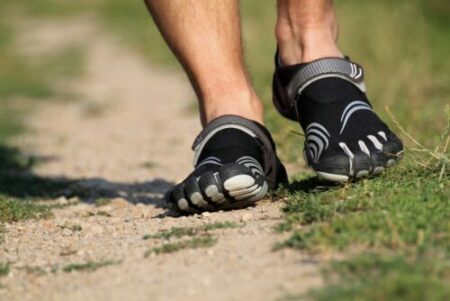Due to the overwhelming evidence about the ability of certified safety helmets to save lives, many countries make it mandatory for bikers to wear them, especially when tackling an unfamiliar mountain bike trail. And, mountain bike helmets sold in the US must comply with the federal safety standards as stipulated by the US CPSC. These helmets get clearance for use in extreme sporting activities like mountaineering, motocross, BMX, downhill racing, and ATV riding.
So, do you understand how mountain bike helmets work? Read on.
The Need for Mountain Bike Helmets
A research report published by the National Library of Medicine, National Center of Biotechnology Information indicates that mountain bike athletes face an injury risk rate of 0.6% annually. Here, it is a record of injuries ranging from minor hits to fatal collisions, involving 1 in every 1,000 mountain bikers. Common causes of the accidents include the athlete’s poor judgment of an escalating situation, over speeding, or riding on slippery surfaces.
Another study by the University of Arizona indicates that bikers involved in crashes while having no helmets on accounted for 75% of the severe cycling-related traumatic brain injuries. The 25% of accident victims who wore helmets were 58% less likely to have severe head injuries or die from a fatal crash. Hence, wearing a helmet not only reduces the chance of getting a brain injury. It also minimizes the severity of brain damage.
Then, here is the thing. If you are ever caught up in a grisly accident, with your head trapped under an 18-wheeler, it is your choice and condition of mountain bike helmet that determines whether you live to ride another day?
Indeed, there are lots of instances where near-fatal crashes came out with miraculous survivors, thanks to the victims wearing certified safety helmets. For, mountain bike helmets are known to withstand extreme pressure (impact force attenuation).

Parts of a Mountain Bike Helmet
A functional mountain bike helmet has various parts scientifically crafted to protect the riders in the event of a collision.
The Dual Shell Construction
The shell is the outermost part of the helmet, equipped to resist any sudden force or vibrations. Most mountain bike helmets rely on an in-mold polycarbonate shell fused to an EPS foam liner for durability. This dual construction is resilient against massive impacts.
EPS & Comfort Liners
Second, are EPS foam liners absorbing shock from rotational forces in the event of a crash. These liners compress to deflect this massive energy. In turn, they protect the brain from injury. Likewise, mountain bike helmets use removable comfort liners to wick away moisture on a hot day, keep you warm on a cold day, and attain a custom fit for your head circumference. These are anti-microbial, washable liners that keep the rider cool, dry, and feeling fresh regardless of the weather conditions.
MIPS Technology
Most mountain bike helmets have another layer in between the outer shell and the inner EPS foam liner. This MIPS Technology insert works to delay the head from rotating inside the helmet in the event of a collision. Indeed, these rotational forces are the main cause of brain injury to riders involved in a collision while wearing their helmets.
Cheek Pads
The helmet’s cheek pads stabilize the shell, preventing side-to-side movements on impact. Likewise, this padding wicks away moisture from the side of the head on a hot day. And, it keeps the rider comfortable while having a perfect fit.
Vents
Fourth are forward and rear vents that guarantee the free flow of air to keep you cool and fresh. These air vents use a unique design that sucks air in and out of the helmet without trapping dirt and sand in the process. A mountain bike helmet may have between 10 to 24 channel vents depending on size and the target user. A helmet with more vents retails at a much higher price as it requires a sophisticated design to guarantee protection.
The Visor
The visor slides up or down to protect your face and eyes from dust, wind, or direct sunlight respectively. It is a signature part of most mountain bike helmets. And, in the event of a crash, this accessory further prevents the rider from hitting their heads directly onto oncoming objects.
Closure/Retention System
Finally, we have a closure or retention system to keep your helmet intact when riding. It may comprise of easy-to-use dial adjust fitting allowing for one-hand operation. Other helmets use a slip and clip design that locks the helmet in place at your preferred adjustment length.
Do you know how all these parts intertwine to offer optimum protection and safety? Let’s dive in further: –

Do Mountain Bike Helmets Need a Full Face?
A full-face mountain bike helmet features extra head and face protection without compromising on ventilation, and comfort. Indeed, this versatile headgear offers unrestricted head movements as you take part in your downhill and endure racing. This design became popular with the advent of enduro lids. The enduro helmets are lightweight; remain cool on a hot day courtesy of an elaborate ventilation system.
Today’s full-face mountain bike helmets have advanced attributes that guarantee safety, optimum ventilation, comfort, and protection for casual use. These features include: –
- A super lightweight yet resilient shell
- Magnetic cheek pads
- A convenient eject system
- Detachable chin bars
- A wide field of view
- An elaborate ventilation system
- Compliance with US CPSC Safety Standard for bicycle helmet for persons age 5 and older
- A close-fitting style in attractive color themes
Further, the extra helmet space accommodates such accessories as: –
- Built-in speaker pockets
- Audio cable routing
- A detachable camera mount
Note that, anyone who is transitioning from an open face mountain bike helmet to a full face one may opt for a convertible helmet and enjoy benefits from both styles.

Are Mountain Bike Helmets Different?
Yes. Mountain bike helmets differ from regular road helmets as follows: –
- A Lower Cut At The Back
A mountain bike helmet is a visibly lower cut at the back. It is an aesthetic and functional design, aimed at reinforcing the helmet’s protective features. Indeed, the riders face lots of obstacles from all directions. Hence, any added protection is a plus.
- A visor
A visor is a signature part of every mountain bike helmet, whether open face or full face. For mountain biking trails often traverse through forests and woodlands, with lots of fallen trees and objects along the way. The visor protects the biker’s face from piercing sun rays that may impede his vision on a hot sunny day. Likewise, this visor shields the bikers from flying objects coming direct at them while at high speeds. Such objects include stones, sand, mud, and tree branches.
- Beefy Construction
Mountain bike helmets incorporate a heavier shell and parts. This design keeps the shell stable on the head as the rider tests their limits on the mountain trail. Indeed, this stable design takes into account the fact that mountain bike riders prefer exploring their limits to attaining the fastest speeds.

Why Do Mountain Bike Helmets Have Peaks?
You can quickly identify a mountain bike helmet by its unique visor or peaks. The visors provide added protections to the riders as follows: –
- Shielding eyes from direct sun glare
- Protecting the face from the scorching
- Guard against dirt and sand
- Act as a safe landing for the head in case of a collision. Here, the visor shields the head from hitting any oncoming objects directly
- Deflecting branches and foliage from poking or slapping on the face
Mountain Bike Helmet Full Face vs. Open
The debate on choosing between a full-face mountain bike helmet or an open face one never ends. Yet, it all depends on the following factors: –
- Type of Riding
- Ideal Fit
- Comfort Level Desired
Open-faced mountain bike helmets, also known as ¾ helmets, are lightweight safety headgears that leave your face visible. These helmets cover your top back and sides of your head, leaving your face exposed. In the event of a crash, you may hit your chin, unless you are a casual rider going at slower speeds allowing you to fall properly. In turn, they allow for a better view of your trail. Plus they are convenient. For example, you do not need to remove your open face helmet when fueling your bike.
Full-faced mountain bike helmets cover the entire face. Most of the helmets incorporate a detachable chin bar. That way, you have open face safety gear when tackling a hot climb, and a full-face helmet for fast descents. These helmets are better equipped for tough mountain trails and fast downhill racing. Here, the rider gets full-face coverage, hence protecting their teeth and chin from injury. For this, full-faced mountain bike helmets are popular with Enduro racers.
Most mountain bikers opt for open face helmets. These helmets are much more comfortable, easy to use, and maintain. But, since they offer less protection, they are only ideal for casual mountain bike riding. Professional mountain bikers ought to prioritize their safety as they push their limits on different mountain trail terrains.
Riding on a hot day can get uncomfortable. Apart from the ventilation system, an open-face mountain bike helmet allows for better air circulation as opposed to the full face version. Next, if you intend to mount as many accessories as possible on your helmet, opt for a lightweight open face helmet. Here, you can add a camera, eye shields, flip mirrors, fit pads, or visors without getting it too bulky for comfort.
So, opt for an open face mountain bike helmet if: –
- You are a casual rider
- your current trail is not new
- You are cycling in warmer climates
- A much more portable helmet that is easy to wear and take off is what you mostly prefer.
Not that, open face helmets vary from one brand to another. Hence, compare price points against performance and comfort level.
Opt for a full-face mountain bike helmet when: –
- You seek full facial coverage
- When you are riding in a colder or less humid climate
- You want to protect your brain and face
- When you have an unlimited budget for your safety headgear
- You want to block flying objects or nasty flies from entering your mouth
- It has maximum vents for optimal ventilation
Note that, a full-face mountain bike helmet may give riders the false impression that they are safe from any injury whatsoever. Only, their skill level plays an important part in ensuring the helmet performs as expected. Then, know your ability and attention span as you choose between an open face mountain bike helmet and a full face one. You do not want to be overconfident, and lose focus of any impending dangers along the way.

How Long Do Mountain Bike Helmets Last?
Most manufacturers recommend replacing your mountain bike helmet after 5 years. These are helmets that have never been involved in a collision. Indeed, mountain bike helmets use EPS foam liner that is only effective on the first impact. This inner-liner compacts upon impact, to absorb shock and redirect energy away from the head. On the second impact, your head is now vulnerable to absorbing the full force of the collision. To confirm if the inner EPS foam is compressed, press the outer shell at random sections. Then, observe how it pops in or out.
Second, your collision-free helmet may have no visible wear and tear signs. But, since they protect your brain, a vital part of your body, it is always advisable to be cautious. Otherwise, replace your mountain bike helmet immediately if: –
- You notice any signs of wear and tear. They include cracks and abrasions on the edges or surfaces. Likewise, fading color is a sign that the helmet quality is deteriorating.
- You have been involved in a collision while wearing the helmet. Still, you may skip the replacement if you never hit your head or where your helmet had no contact with another object.
- You hit your head or dropped your helmet accidentally
- There is internal damage not related to a collision. Here, you want to remove any detachable parts, to observe the inner sections of the helmet. Confirm that the buckles and retention system work as designed. Check for signs of wear, fading, or loose stitches.
Note that, if your helmet has none of the above signs, you may exceed the set manufacturer expiration date by a few weeks or months as you plan to get your next helmet. Still, exercise caution as you do not want to sustain a brain injury trying to save a few bucks.

People Also Ask:
Finally, here are two most common questions people also ask about how mountain bike helmets work: –
1. How Should A Full Face Mountain Bike Helmet Fit?
You know when a full-face mountain bike helmet is fit correctly when it feels tight yet comfortable. That is, it is neither annoyingly tight nor loose to the extent of motion as you ride your bike.
To test this, wear your helmet and fasten it using the chin straps. Then, confirm that there is an inch distance between your eyebrows and the helmet. A low-sitting helmet may be too big for you. And, a high sitting one is a size too small for you.

2. Can I Use MTB Helmet for Road Biking?
Mountain biking and road biking present varying safety challenges for the rider. First, whereas road biking requires being cautious about oncoming cars, a mountain bike rider faces more obstacles require to break more often. Second, the mountain bikers use a heavier bike, hence more demanding to control. But, should a mountain biker fall on their dirty trails, they sustain fewer injuries compared to a road biker hitting the pavement or an oncoming car.
From the above, helmets fit for road biking require extra safety features compared to MTB helmets.
Here are their notable differences: –
- A mountain bike helmet is heavier than a road bike helmet. It features a beefy construction to keep it secure as you tackle varying terrains on your mountain trail.
- A road bike helmet uses a lightweight, aerodynamic design to minimize drag, allowing for faster speeds. For, a road biker prefers speed. But, a mountain biker wants to test their limits in varying cycling conditions.
- All mountain bike helmets feature a visor that shields the eyes from piercing sun glare, dust, strong winds, and branches or other obstacles along the way. Road bike helmets rarely need a visor. Instead, road bikers pair their safety shells with choice sunglasses.
Then, you may use an MTB helmet for road biking. But, you will have limited capabilities on the road. It is advisable to invest in the appropriate road bike helmet when on the road.
Conclusion
Now, do you understand how your mountain bike helmet works? By appreciating its parts, you can make a better decision in those split-second moments in the event of a crash. It is this prior knowledge that helps you survive a rather fatal crash with only minor injuries if any.














I’m not into mountain biking, but I caught your article searching for a cycling helmet. And I was immersed in reading this because of the detailed information you shared. I often cycled in my hilly neighborhood and know I may venture into mountain biking in the near future. Anyway, I learned something new, and this helpful information can be incorporated into my cycling helmet search. Thank you!
Hi Sharon, and thank you.
Thank you for your kind words.
Great to hear about your benefit of the article too.
I believe, as you are in a cycling helmet search, you could have interest in this post.
Don’t hesitate to contact me if I can help you with anything else or if you have any questions.
Thanks for sharing this fascinating topic. We are casual trail bikers in my family, and we only ever tackle gentle, fairly flat terrain. We mostly cycle for pleasure and to get out in nature. Our concern for the helmets we use is general safety. However, I will have to watch out as our daughter is taking a greater interest in tackling more vigorous and demanding trials. So perhaps the time is ripe for upgrading her headgear and going for a mountain bike helmet. Now I feel very well-informed. Thanks and best regards, Andy
Hi Andy, and thank you.
Thank you for your kind words.
Great to hear about your benefit of the article too.
I believe, as you are in a cycling helmet search for your daughter, you could have interest in this post.
Don’t hesitate to contact me if I can help you with anything else or if you have any questions.
A Highly comprehensive and well-written article about mountain bike helmets.
Thank you for your kind words!